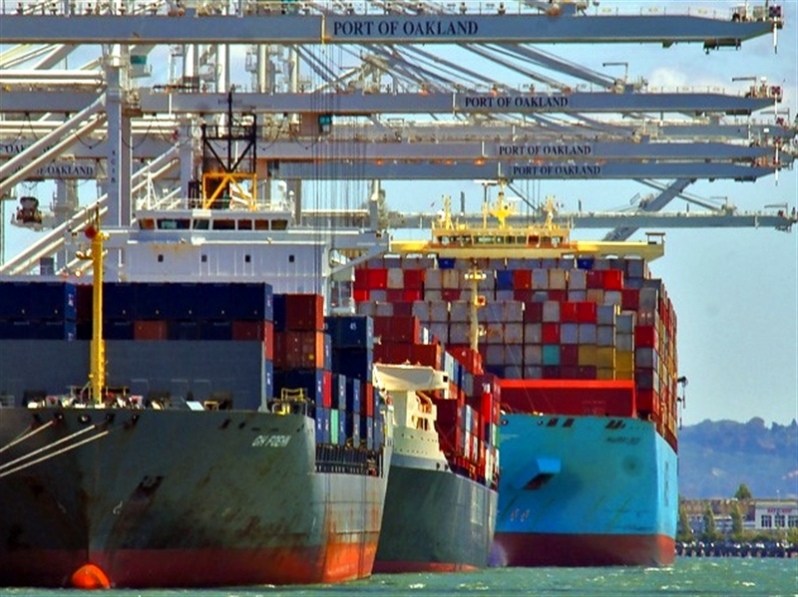
Tension increases in labor negotiations of dockers in the U.S. and first conflicting actions are observed
Meanwhile, spot rates continue their downward trend and improve the reliability of itineraries.
Spot sea fares from Asia continued to fall last week, although shipping lines have applied blank sailings significantly on itineraries bound for the US. and Europe in order to cushion the fall in demand, says the weekly report Freightos Baltic Index (FBX) which indicates that spot rates Asia – West Coast U.S. (USWC) They fell by 8% to less than US$3,000/FEU this week, meaning a 45% decrease since the beginning of the month and the lowest level on the route since August 2020, although prices remain 128% higher than in September 2019.
Moreover, tariffs from Asia to the U.S. East Coast (USEC) and northern Europe fell by about 25% in September, but remain 150% and 400% higher, than in 2019, respectively. In particular, the increase in USEC port congestion in recent months is due to a significant change in volumes from the USWC, which handled only 45% of the country’s import containers in August.
Tension in negotiations with the ILWU
According to the FBX report, the search ratio of the ports of Los Angeles and Long Beach as a destination for shipments from China to the U.S. has fallen to its lowest level since the beginning of the pandemic. The explanation that has been repeatedly given to this situation is that importers have looked for other ports not only to avoid the congestion and delays they experienced during last year’s peak season, but also to avoid possible work interruptions since July, when the ILWU contract with USWC ports expired, an aspect that, in the last week, has been stressed.
According to the FBX report, the previous week the first conflicting actions were carried out in this dispute when members of the International Union of Stevedores and Warehouses (ILWU) in the ports of Seattle-Tacoma and Oakland temporarily delayed operations. Meanwhile, the analyst of the maritime, port and logistics industry, Jon Monroe, stressed that “sooner or later these negotiations will reach a peak”.
It also refers to the distressing silence surrounding these conversations. ” We’ve heard very little for months, yet two key issues remain, technology and a fight between two unions over who keeps the team at a terminal in the port of Seattle. Why is there no news? Could it be that the ILWU is waiting until after the midterm elections? So what? A possible strike?” He asked, while wishing “good luck to companies with products that will arrive at USWC ports in November and December”.
According to a CNBC report, allegations have surfaced about a “tactical productivity slowdown” by dockers at the ports of Oakland and Seattle-Tacoma, although according to the CNBC Suplly Chain Heat Map, Operations at these ports have been in line with recent productivity and there have been no significant changes or records of cargo handling problems.
Reliability
One of the positive aspects of the last period is the reliability of the global routes continues with an upward trend and the decrease of the delays of the landings. Both aspects clearly associated with the lower volumes transported and the lower demand for capacity. In this regard, the latest report from Sea-Intelligence’s Global Liner Performance (GLP), which covers the reliability of schedules on 34 different maritime routes and more than 60 shipping lines, indicates that reliability recorded in August the largest increase in the monthly comparison in 2022 with 5.8 percentage points, reaching 46.2%. Meanwhile, the average arrivals of ships with delays has drastically decreased so far this year with an average that fell -0.57 days per month to 5.86 days. “This is now the first time that the average delay falls below the 6-day mark since April 2021,” the report said.
With a programming reliability of 53.0%, Maersk was the best located shipping line in August 2022, followed by CMA CGM with 46.0%. Six other operators recorded a programming reliability of more than 40%, five recorded a programming reliability of 30% to 40%, while Yang Ming recorded the lowest programming reliability with 29.8%.
On the other hand, 12 of the 14 main operators recorded a monthly improvement, while 14 recorded a year-on-year increase, with 11 of them recording double-digit figures and three marking increases of more than 20 percentage points.
SOURCE: MUNDOMARITIMO.CL
